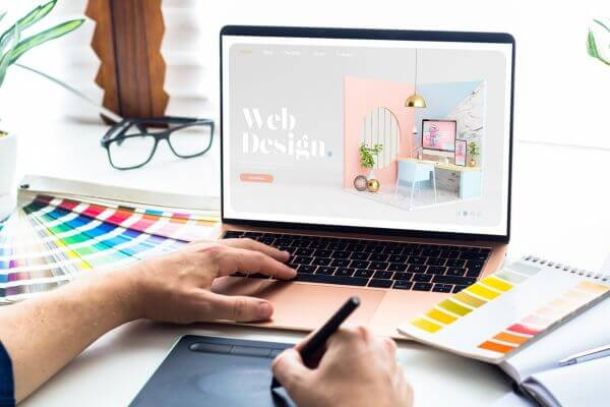Designing for Print vs. Digital: Key Differences and Considerations
Designing for Print vs. Digital: Key Differences and Considerations
In the world of design, understanding the differences between print and digital mediums is crucial for creating effective and impactful designs. While both print and digital design share some common principles, they each have unique requirements, challenges, and opportunities. As designers, knowing when to apply specific techniques for print versus digital is essential to delivering the right message to the right audience. In this article, we’ll explore the key differences and considerations when designing for print versus digital, providing insights that can help you navigate these distinct environments with confidence.
Understanding the Fundamentals
Before delving into the specifics, it’s important to grasp the fundamental differences between print and digital design. Print design refers to any visual content created for physical mediums such as brochures, posters, magazines, and business cards. Digital design, on the other hand, encompasses content intended for screens, including websites, mobile apps, social media graphics, and digital ads.
The core distinction lies in how the audience interacts with the content. Print designs are tangible, static, and permanent, while digital designs are dynamic, interactive, and often ephemeral. This fundamental difference influences everything from layout and typography to color and resolution.
Resolution and Image Quality
One of the most significant differences between print and digital design is the resolution. Print design requires high-resolution images to ensure that the final product is sharp and clear when printed. Typically, print designs use a resolution of 300 dots per inch (DPI), which provides the necessary detail for high-quality printing.
In contrast, digital designs generally use a resolution of 72 pixels per inch (PPI), which is sufficient for most screens. While this lower resolution is acceptable for digital formats, using the same resolution for print would result in blurry and pixelated images. Therefore, when designing for print, it’s essential to work with high-resolution images and vector graphics to maintain clarity and precision.
Color Considerations
Color plays a crucial role in both print and digital design, but the way colors are produced and perceived differs between the two mediums. In print design, colors are typically created using the CMYK color model, which stands for Cyan, Magenta, Yellow, and Key (Black). This model is used because it reflects how inks are combined during the printing process to produce a wide range of colors.
Digital design, however, uses the RGB color model—Red, Green, and Blue—which is based on how colors are emitted by screens. The RGB model can produce more vibrant and varied colors than CMYK, but these colors may not always translate accurately when printed. As a result, designers must be mindful of how colors will appear across different mediums and make adjustments as necessary.
Another important consideration is color consistency. In print, colors can vary depending on the type of paper, ink, and printing method used. To ensure consistency, designers often use Pantone Matching System (PMS) colors, which are standardized colors that can be replicated accurately across different print jobs. In digital design, color consistency can also be a challenge due to variations in screen calibration. Designers should test their work on multiple devices to ensure colors appear as intended.
Typography and Readability
Typography is a key element in both print and digital design, but the approach to typography can differ significantly between the two. In print design, designers have more control over how text will appear, as the final product is static and unchanging. This allows for the use of a wider variety of fonts, font sizes, and styles. Print designers can also use techniques like kerning, leading, and tracking to fine-tune the readability and aesthetics of the text.
In digital design, however, typography must be flexible and responsive. Text must be legible across a range of screen sizes and resolutions, from large desktop monitors to small smartphone screens. This often requires the use of web-safe fonts that are universally supported across different devices and browsers. Additionally, digital designers must consider factors such as screen glare and contrast, which can affect readability, especially on mobile devices.
Another consideration is the interactive nature of digital design. Text in digital formats often includes hyperlinks, buttons, and other interactive elements that are not present in print. Designers must ensure that these elements are easily distinguishable and accessible, contributing to a positive user experience.
Layout and Composition
Layout and composition are foundational aspects of design, and the approach to these elements can vary depending on whether the design is for print or digital. In print design, layouts are typically fixed and unchanging, meaning that designers can create intricate compositions with precise alignment and spacing. Print layouts are often based on grids, which provide structure and balance, ensuring that all elements are positioned correctly and proportionately.
Digital design, however, requires more flexibility in layout and composition due to the responsive nature of digital content. Websites and mobile apps must adapt to different screen sizes and orientations, which means that a single layout may not work across all devices. To address this, digital designers often use responsive design techniques, such as fluid grids and flexible images, to create layouts that adjust dynamically based on the user’s screen.
Additionally, digital design allows for interactivity and motion, which can enhance the layout and composition. Elements like animations, hover effects, and transitions can add depth and engagement to a digital design, creating a more immersive experience for the user. However, these interactive elements must be used thoughtfully to avoid overwhelming the user and detracting from the overall design.
Printing Techniques vs. Digital Delivery
Another key difference between print and digital design is the method of delivery. Print designs must be prepared for physical production, which involves specific techniques and considerations that don’t apply to digital design. For example, print designers must be familiar with bleed, trim, and safe areas to ensure that the final printed product looks as intended. Bleed refers to extending the design beyond the edge of the page to avoid white borders after trimming, while trim marks indicate where the paper should be cut. The safe area is the part of the design that remains visible after trimming, and designers must ensure that no critical elements are placed outside this area.
In digital design, delivery is often immediate and requires different considerations. Digital designs must be optimized for fast loading times, especially on mobile devices with limited bandwidth. This involves compressing images, minimizing file sizes, and using efficient coding practices. Additionally, digital designers must consider accessibility standards, ensuring that their designs are usable by people with disabilities. This may involve adding alt text to images, ensuring sufficient color contrast, and providing keyboard navigation options.
User Experience and Interaction
One of the most significant differences between print and digital design is the level of user interaction. Print design is a passive experience—once the design is printed, the user interacts with it in a static way, such as reading a magazine or viewing a poster. The design’s effectiveness relies solely on its visual appeal and the clarity of its message.
Digital design, on the other hand, is interactive and dynamic. Users can click, scroll, and engage with the content in real-time, creating a more immersive experience. This interactivity introduces new challenges and opportunities for designers. For example, digital designs must account for user flow and navigation, ensuring that users can easily find the information they need and complete desired actions, such as making a purchase or filling out a form.
Additionally, digital design often incorporates multimedia elements, such as video, audio, and animations, which can enhance the user experience. However, these elements must be carefully integrated into the design to avoid distracting from the core message. Designers must also consider the technical limitations of users’ devices, such as screen size, resolution, and internet speed, to ensure a smooth and enjoyable experience.
Cost and Environmental Impact
Cost is another factor that differentiates print and digital design. Print design can be more expensive due to the costs associated with printing, materials, and distribution. The price of paper, ink, and binding, as well as the cost of shipping and handling, can add up quickly, making print projects more costly than their digital counterparts. Additionally, print runs are often fixed, meaning that changes or updates to the design after printing can be costly or even impossible.
Digital design, on the other hand, is generally more cost-effective, as it eliminates many of the expenses associated with printing. Once a digital design is created, it can be distributed widely at little to no additional cost, making it a more scalable option. Furthermore, digital designs can be easily updated or modified, allowing for greater flexibility and adaptability.
Environmental impact is another consideration. Print design involves the use of physical resources, such as paper and ink, which have a direct impact on the environment. The production, transportation, and disposal of printed materials contribute to carbon emissions, deforestation, and waste. Digital design, while not entirely without environmental impact, generally has a smaller footprint, as it does not require the use of physical materials. However, digital design does have its own environmental considerations, such as energy consumption and electronic waste, which should not be overlooked.
Conclusion: Bridging the Gap Between Print and Digital
Designing for print and digital requires different approaches, skills, and considerations, but the ultimate goal remains the same: to communicate a message effectively and engage the audience. By understanding the key differences between these two mediums, designers can make informed decisions that enhance their work and ensure it resonates with the intended audience.
While print design offers the tangibility and permanence of physical materials, digital design provides the flexibility, interactivity, and immediacy of the digital world. Each medium has its strengths and limitations, and the best designs often come from a thoughtful integration of both. As technology continues to evolve, the lines between print and digital design will likely continue to blur, creating new opportunities for designers to innovate and create impactful experiences across all platforms.
Ultimately, the key to successful design, whether for print or digital, lies in understanding the unique characteristics of each medium and using them to your advantage. By considering factors such as resolution, color, typography, layout, and user interaction, you can create designs that are not only visually appealing but also effective in achieving their intended purpose.

